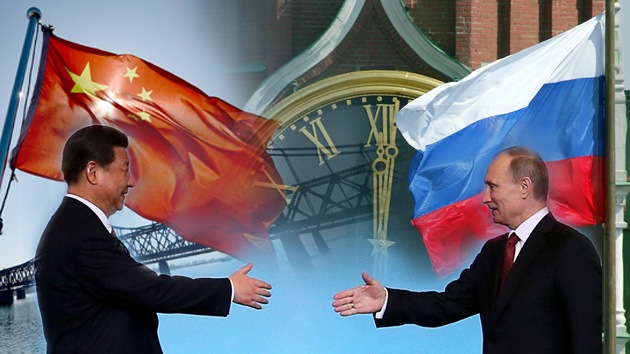By Johan Galtung
To understand something we often compare it with something else.
A recent Harvard study found 26.7% of world car production in China and 13.3% in USA; US economy bigger but China leading in export with 8 of the 12 biggest harbors; USA end 2016 fighting 7 wars with bases all over and China with no wars or bases, investing, building the New Silk Road-Lane, the Economic Belt. How successfully, it is to be seen.
But these are global power relations. That the West is going down, the Rest is coming up, the USA is a major part of the West and China of the Rest, are decades-old truths. And the EU is also part of the West.
What does domestic China remind us of, historically, structurally? Not USA, a state since 1776, 1812. Let us compare China with present border and context to Europe from the Atlantic to–whatever the border.
One conclusion can be foretold: only recently are both of them becoming cohesive, as super-states and as super-nations. Why, and how?
Europe is a collection of states, many of them nation-states, with a history of much warfare. Bilaterally particularly in the Top Pentagon England-France-Germany-Spain-Italy. Multilaterally as alliances pitted against each other in the catastrophic 30-year war 1618-48 and the two “world” (meaning European) wars 1914-18, 1939-45. A dark continent.
The region we call “China” is one dynasty after the other, with belligerence, as was also the case between co-existing dynasties.
The Qin 221-206 BC, Han 206 BC-220 AD and Manchurian Qing 1644-1912 dynasties claimed glorious central authority, not over “China” as that idea was missing, but for the world. So did France and Germany, seeing themselves as central in Europe and through Europe for the whole world.
However, with centrality comes resistance from the periphery; a status no self-respecting state or nation would like to assume.
“Republic of China”–Zhuka Minkoku–as name of a state dates from the nationalist revolution around 1911-12 that ended the Qing dynasty.
The 1949 Mao revolution added ren min, people, for the “People’s Republic of China”, and Taiwan kept the “Republic of China”.
Only in the past few years did President Xi Jinping define all inhabitants as members of the same nation, as “Chinese”; like the Jacobin did in France, Citizenship = Nation. Whether Xi will succeed remains to be seen; France is right now loosening up, decentralizing.
“Europe”–parts of Europe and Europe as a whole–has also been exposed to centripetal and centrifugal forces. The small villages, counties, duchies have co-existed with the big, the Roman Empire(s), the Holy Roman Empire of the German Nation, sometimes small prevailed, sometimes big. Then came the nation-states with wars and alliances. The unity and centrality of the European Community-Union, however, is as recent as 1958 (Treaty of Rome) with a French-German beginning in 1950.
Even more recent are efforts to call the inhabitants “Europeans”; now exposed to strong centrifugal nation-state forces. As the duchies once asserted themselves and then were assembled into a Reich or two, and in turn were disassembled into Länder. European reality is neither centripetal nor centrifugal, but the dialectic between the two.
Take Norway: schools teach that King Harald Hårfagre assembled one Norway in 872 but not about the 50 kingdoms that were brutally crushed. Much later (1837) came very high levels of municipal and provincial, kommune and fylke autonomy, now subjected to centralization reducing the provinces from 19 to 10 and the municipalities from 400 to 100. There will be decentralization after that. The oscillation has no end.
The same may apply to “China”. The capital or center changed many times; key names being Xi’an, Nanjing, Beijing, Chungking. There is talk about close to 2,000 nations speaking their variety of “Chinese” however “unified” in the written language. Yet, some may feel a geographical attachment strong enough to claim autonomy.
The USA as well–there are several and strong voices for autonomy.
Similar pasts for “China” and Europe with oscillating cohesiveness and shifting centers–in Europe now Brussels-Luxembourg-Strasbourg–prompt a question, “Could they also have similar futures”? How about the unsettled Northern border of China and Eastern border of Europe?
Long ago, but mainly Ming built an answer: a 6,259-Km Great Wall along the southern edge of Inner Mongolia, now a big Chinese province.
East and West of Mongolia are “Outer Northwest China” and “Outer Manchuria” that the Russian Empire forced the Qing dynasty to cede, by “unequal treaties” from 1851 (Kulja) to 1896 (Lobana); now increasingly settled and cultivated by Chinese farmers. Reminiscent of USA-Mexico.
The Europeans used rivers south-north or north-south but settled on the Ural Mountains from the Arctic to the Caspian as Eastern border. Peaks, but mainly hills, and today with the same Russia on either side. The historical border is from the +395 division of the Roman Empire in Catholic and Orthodox parts, still there, dividing Ukraine and Belarus.
And the prognosis, foreknowledge? China will continue pushing Chinese north, not any border. This happens within the SCO–Shanghai Cooperation Organization–in principle as cooperation. The push is not to the Arctic but limited to the historically contested areas.
Europe will continue pushing east, but how? After the Bratislava EU-27 summit NATO and USA can no longer do any pushing. With Ukraine at the border and Russia without border, the eastern border of a Europe from the Atlantic Ocean will move through Russia to the Pacific Ocean, waiting for Ukraine-Belarus to join. The absence of borders in Russia makes prescient Gorbachev’s vision of a “European House” inevitable.
And this happens within pan-European organizations: the Council of Europe, and the OSCE. Slowly but surely this will be their agendas.
Can moving China and Europe co-exist? Better than with no moves. Russia and China, and Europe and Russia, have to come to grips with old traumas. And one key lies in China and Europe inspiring each other.










